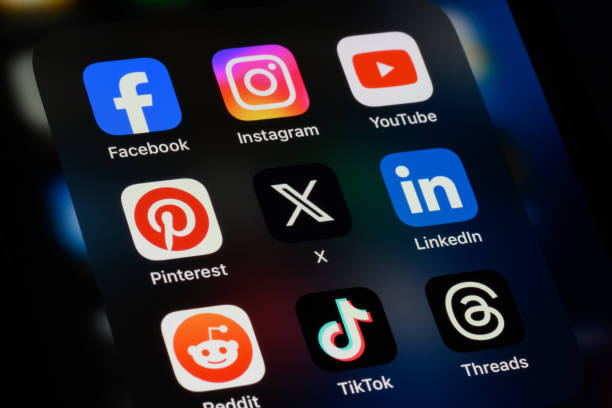For Licensed Marriage and Family Therapists (LMFTs), LMFT social media marketing is a powerful strategy to connect with local clients, build trust, and grow their practice. With couples and families increasingly turning to platforms like Instagram, Facebook, and LinkedIn to find mental health support, a targeted social media presence can enhance visibility and foster meaningful engagement. This comprehensive guide explores how LMFT social media marketing can attract local clients, key strategies to implement, and ethical considerations to maintain professionalism in 2025.
Why Social Media Marketing is Essential for LMFTs
Social media offers LMFTs a cost-effective way to reach local audiences, share expertise, and normalize therapy. By creating valuable content tailored to couples and families, therapists can position themselves as trusted professionals in their community. Here’s why LMFT social media marketing is critical:
Building Local Visibility
Platforms like Facebook and Instagram allow LMFTs to target local audiences through location-based ads and hashtags, increasing discoverability, as highlighted in this LinkedIn post.
Establishing Trust
Sharing insights on marriage and family dynamics builds credibility and encourages clients to seek your services, as noted in this LinkedIn post.
Engaging Directly with Clients
Social media enables two-way communication, allowing LMFTs to respond to comments and messages, fostering rapport with potential clients, as discussed in this LinkedIn post.
Key Social Media Platforms for LMFTs
Choosing the right platforms is crucial for effective LMFT social media marketing. The table below outlines popular platforms, their benefits for engaging local clients, and links to their analytics tools for tracking performance.
| Platform | Benefits for LMFTs | Analytics Tool |
|---|---|---|
| Ideal for local ads, community groups, and sharing long-form content like blogs. | Meta Business Suite | |
| Visual platform for reels and stories to showcase therapy tips and client testimonials. | Instagram Insights | |
| Professional networking for referrals and sharing expertise with local professionals. | LinkedIn Analytics | |
| Twitter/X | Quick updates and local hashtags to join mental health conversations. | Twitter Analytics |
Actionable Tip: Focus on 2–3 platforms where your target audience is most active to avoid spreading efforts too thin.
Effective Social Media Marketing Strategies for LMFTs
To engage local clients, LMFTs must create a strategic, ethical, and authentic social media presence. Below are key strategies for LMFT social media marketing:
1. Create Valuable, Local-Focused Content
Share content that resonates with local couples and families, such as tips for managing stress or improving communication. Use local hashtags (e.g., #DenverTherapy) to increase visibility, as recommended in this LinkedIn post.
Actionable Tip: Post a weekly tip like “3 Ways to Strengthen Your Marriage in [Your City].”
2. Leverage Local SEO and Ads
Optimize your profiles with location-specific keywords (e.g., “family therapy in Seattle”) and run targeted ads to reach local audiences. Platforms like Facebook allow precise demographic targeting, as noted in this LinkedIn post.
SEO Tip: Include LMFT social media marketing in your profile bios to boost discoverability.
3. Engage Actively with Followers
Respond promptly to comments and messages to build rapport. Create polls or ask open-ended questions (e.g., “What’s one challenge in your relationship?”) to spark engagement, as suggested in this LinkedIn post.
Actionable Tip: Dedicate 10 minutes daily to reply to follower interactions.
4. Share Ethical Testimonials
With client consent, share anonymized testimonials to build trust. For example, “A local couple found new ways to communicate through therapy.” Ensure compliance with HIPAA and AAMFT ethics, as discussed in this LinkedIn post.
Actionable Tip: Use Instagram Stories to share short, anonymized success stories.
5. Use Video Content
Videos, such as Instagram Reels or Facebook Live, are highly engaging. Record short clips introducing yourself or sharing therapy tips to connect with local audiences, as highlighted in this LinkedIn post.
Actionable Tip: Create a 30-second video introducing your practice and post it with local hashtags.
6. Collaborate with Local Professionals
Partner with local therapists, doctors, or schools to cross-promote content or host joint webinars. LinkedIn is ideal for building these connections, as noted in this LinkedIn post.
Actionable Tip: Reach out to a local professional for a guest post or Instagram Live session.
7. Track Performance with Analytics
Use platform analytics to monitor engagement, reach, and conversions. For example, if a post about “coping with parenting stress” performs well, create similar content, as discussed in this LinkedIn post.
Actionable Tip: Review analytics monthly to refine your strategy.
Benefits of LMFT Social Media Marketing
Implementing LMFT social media marketing offers significant advantages for engaging local clients and growing your practice:
Increased Local Client Inquiries
Targeted content and ads drive more local traffic to your website or booking system, converting followers into clients, as highlighted in this LinkedIn post.
Enhanced Trust and Credibility
Regular, valuable posts position you as a trusted expert in your community, encouraging clients to choose your services over competitors.
Cost-Effective Marketing
Social media is more affordable than traditional advertising, allowing LMFTs to reach local audiences with minimal investment, as noted in this LinkedIn post.
Stronger Community Engagement
Engaging with local followers fosters a sense of community, making clients feel connected to your practice before their first session.
Support for Teletherapy Promotion
Social media promotes both in-person and virtual therapy, expanding your reach within your licensed state, as discussed in this LinkedIn post.
Ethical Considerations in LMFT Social Media Marketing
LMFTs must navigate social media ethically to maintain professionalism and comply with regulations. Here are key considerations:
Maintain Professional Boundaries
Avoid friending clients on personal accounts and keep professional pages separate. Use privacy settings to limit personal profile visibility, as recommended in this LinkedIn post.
Ensure HIPAA Compliance
Never share identifiable client information. Use secure platforms for messaging and obtain consent for testimonials, as noted in this LinkedIn post.
Avoid Clinical Advice
Social media content should be educational, not therapeutic. Include disclaimers stating that posts are not a substitute for therapy, as suggested in this LinkedIn post.
Be Authentic but Professional
Share personal insights sparingly to normalize therapy, but avoid oversharing unhealthy coping behaviors, as discussed in this LinkedIn post.
Actionable Tip: Review the AAMFT Code of Ethics before posting to ensure compliance.
Common Challenges and Solutions
While LMFT social media marketing is powerful, it can present challenges. Here are common issues and how to address them:
1. Time Constraints
Managing social media alongside a busy practice is daunting. Use scheduling tools like Hootsuite to plan posts in advance, as recommended in this LinkedIn post.
Solution: Batch-create content monthly to save time.
2. Lack of Engagement
Low follower interaction can discourage LMFTs. Focus on high-quality, relevant content and use polls or questions to boost engagement.
Solution: Experiment with different post formats, like videos or carousels, to find what resonates.
3. Ethical Missteps
Inadvertent privacy breaches or unprofessional posts can harm your reputation. Regularly review posts for compliance and professionalism.
Solution: Consult a colleague or take a continuing education course on ethical social media use.
4. Budget Limitations
Paid ads can be costly for solo practitioners. Start with small budgets and target local audiences for better ROI, as noted in this LinkedIn post.
Solution: Allocate $10–$20 monthly for targeted ads and monitor performance.
How to Implement LMFT Social Media Marketing
Ready to engage local clients with LMFT social media marketing? Follow these steps to build an effective strategy:
1. Define Your Audience
Identify your ideal local clients (e.g., couples, parents, or blended families) and tailor content to their needs.
2. Set SMART Goals
Create specific, measurable goals, such as “gain 100 local followers in three months” or “drive 10 inquiries monthly,” as suggested in this LinkedIn post.
3. Optimize Your Profiles
Ensure profiles are professional, with a clear bio, contact details, and a link to your website or booking system.
4. Create a Content Calendar
Plan posts weekly, mixing educational tips, testimonials, and local engagement content. Use scheduling tools to stay consistent.
5. Monitor and Adjust
Track analytics to identify high-performing content and adjust your strategy to maximize engagement and conversions.
Actionable Tip: Start with one platform, like Instagram, and expand to others once you’re comfortable.
The Future of LMFT Social Media Marketing
Social media is evolving with trends like AI-driven content creation, interactive reels, and community-focused platforms. By mastering LMFT social media marketing now, you can leverage these innovations to stay ahead, as explored in this LinkedIn post. A strategic, ethical social media presence will remain essential for engaging local clients and growing your practice.
Conclusion
LMFT social media marketing empowers therapists to connect with local clients, build trust, and grow their practice ethically and effectively. By creating valuable content, leveraging local SEO, and engaging authentically, you can attract couples and families seeking support in your community. With the right strategies and tools, social media becomes a powerful ally in expanding your reach while maintaining professionalism. Ready to elevate your social media presence? Contact Mental Health IT Solutions to develop tailored, HIPAA-compliant marketing solutions for your LMFT practice in 2025.







